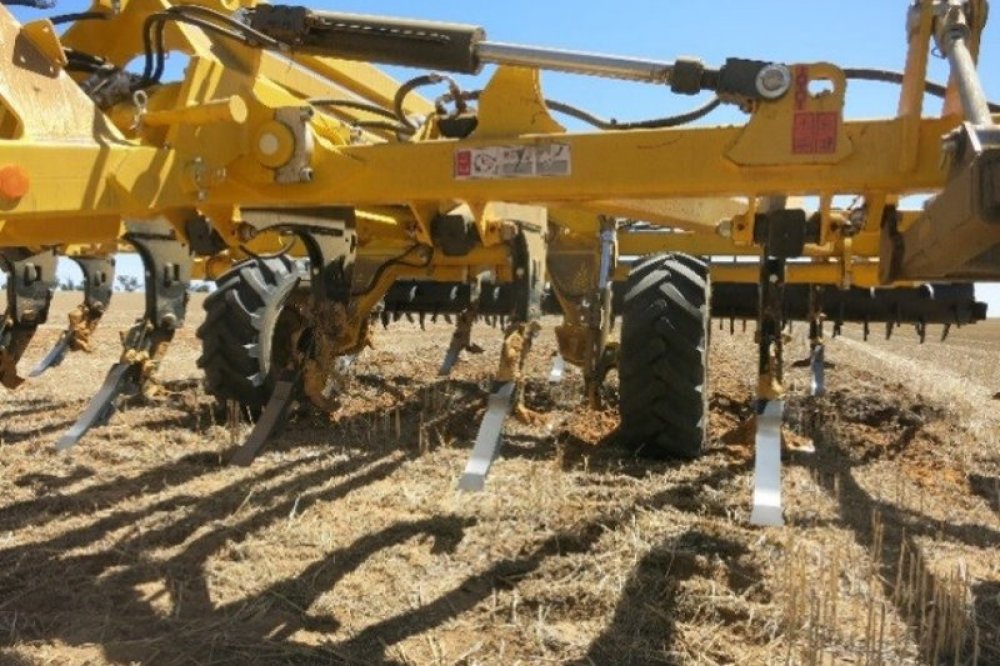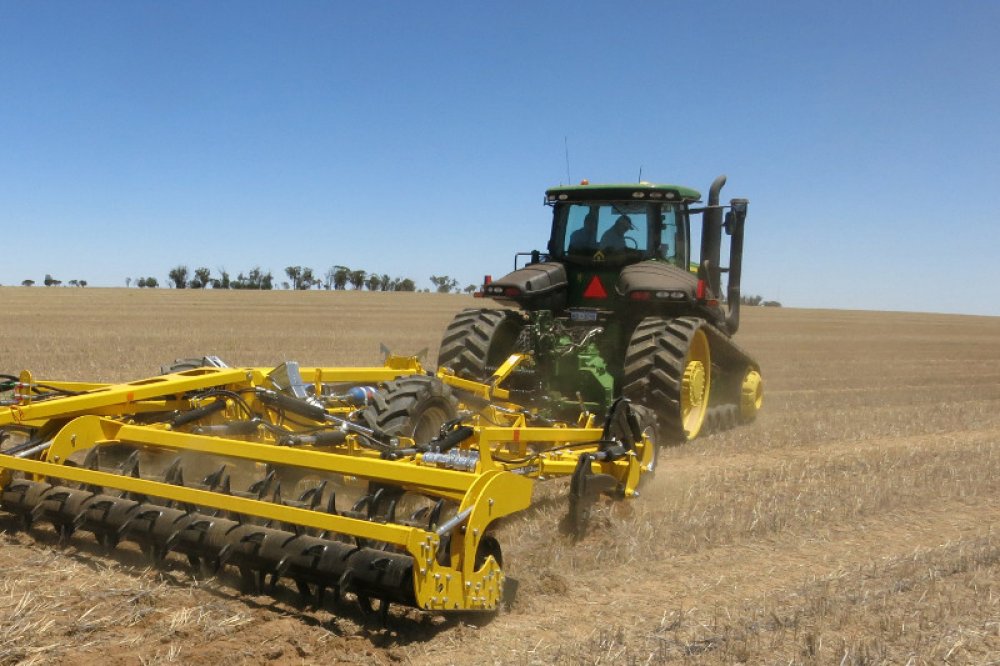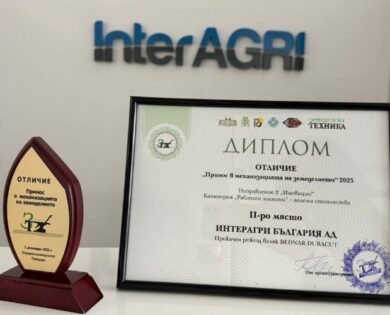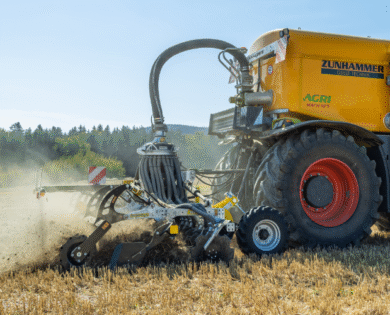Result of the Two-year Research in Western Australia
The research monitored CTF combined with deep loosening in 8 selected trial locations with 6 different types of subsoil. Specifically, it was a territory in Western Australia between the cities of Binnu and Ongerup. There are the following types of soil there: sandy, clay, red with soil leaching as well as capillary action, yellow with soil leaching and capillary action, limy and heavy.
The advantages of deep soil cultivation were surveyed between Binnu and Ongerup in Western Australia
TERRALAND chisel covered with soil
The subject of the research was to determine whether or not this method of cultivation is more productive than traditional systems, has a positive effect on the economic growth of businesses, and causes changes in organic substances in the soil profile. The results of the research were presented in Australia at the 2017 GRDS Update in Perth and at the Regional in Geraldton. Wayne Parker was the head of research.
Parker stated in presentations that the crop increased after two years in the following way:
Parker stated in presentations that the crop increased after two years in the following way:
Year 1 of research (2015):
- By 30% and more in 5 locations. In particular, these were locations with wheat.
- By 1 – 10% in 2 locations, also with wheat.
Year 2 of research (2016):
- By 30% and more in the locality of Munglinup where legumes were sown.
- By 10 – 30% in 4 locations, also with legumes.
- By 1 – 10% in one location, again with legumes.
- No increase in the crop was demonstrated in two locations after the first two years. Legumes were sown in these locations.
The research showed that deep soil cultivation reduces the risk of loss of crop under extreme conditions. Parker’s team defined such conditions as thermal shock, frost or flooding of fields in flood areas. Deep cultivation provides roots with access to humidity in greater depths and thus a better supply of required minerals.
TERRALAND TO 6000 in Australian fields during deep soil processing
Deep soil processing by TERRALAND TO 6000
Course of Deep Soil Processing
- A machine for shallow soil loosening was used in the individual locations. Loosening was done at a depth of 30cm, 45 – 60cm, and above 60cm.
- Furthermore, soil was processed by rear tandem spiked rollers that crush clods immediately after loosening, in a single pass.
- The set also included packers. The packers are optional equipment used to maximize the finalization of the operation. Their main contribution is soil levelling. The operation was performed by a TERRALAND TO 6000 by BEDNAR.
To increase organic substances in the soil profile, poultry fertilizer was used. To maintain the soil acidity of lime and to preserve nitrogen in subsoils, gypsum was used.
Controlled Traffic Farming (CTF)
This is an integrated approach of farms, based on organizing individual passes of the machinery sets with the use of modern navigation possibilities. It is basically controlled traffic of agricultural machines in the fields with potential savings in the input costs. Such operations reduce soil load and its subsequent damage thanks to reducing the number of passes.
The information about the research was published by Wayne Parker on 26 May 2017 at farmingahead.com.
(http://www.farmingahead.com.au/machinery/tillage/wa-research-shows-benefits-of-deep-ripping/)
 BEDNAR FMT
BEDNAR FMT






